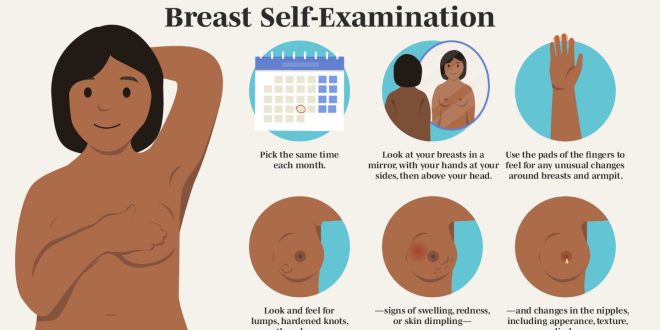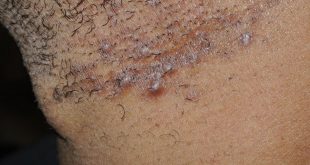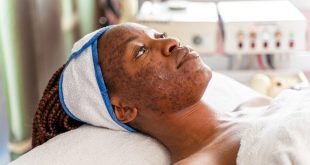By Akalazu Chibuikem Nnamdi
17 April 2023 |
2:03 pm
Owing to increased awareness of the value of routine health checks, preventative healthcare is now standard practice. We generally agree that preventing is better than managing or eventually treating or curing. Early screenings encourage a good diet, habits and deliberate exercise, thus, enabling a proactive healthy lifestyle. Early detection enables the prevention of likely health…

Owing to increased awareness of the value of routine health checks, preventative healthcare is now standard practice.
We generally agree that preventing is better than managing or eventually treating or curing. Early screenings encourage a good diet, habits and deliberate exercise, thus, enabling a proactive healthy lifestyle.
Early detection enables the prevention of likely health complications, especially, after studying the family history.
Health checks also over time lower the cost of healthcare, by avoiding expensive medical procedures in the event that a health condition is discovered. They foster good patient-physician interaction that makes for effective treatment. Some commonly done health checks, which can be facilitated at home include:
Body temperature: The average body temperature is 37 °C, however, as a result of factors such as our tropical environment, the time of day, your age, level of exercise, food, and other factors, it can range from 36.1 to 37.2 °C.
A feverish condition is defined as a body temperature of 38°C or more, which is typically the outcome of being ill.
Elderly adults, for instance, tend to have lower body temperatures, so even when they are ill, their temperatures might not rise to those associated with a fever.
To get a baseline temperature, a thermometer can be various periods of the day to achieve a baseline temperature.
Pulse Checks: Between 60 and 100 beats per minute constitute a normal resting heart rate. If you experience heart palpitations or have a quick resting heart rate, you may have a heart issue.
To measure your palpitations, put the first two fingers of one hand on the region at the base of the wrist on your other hand. Count your pulse for 10 seconds and multiply it by six, it should be between 60 and 100.
If your resting pulse is greater than 100 or less than 60 (assuming you are not a high-intensity athlete), or if your heart appears to be skipping beats or not maintaining a steady rhythm, you should consult a doctor immediately.
Blood Glucose (Body sugar test): Self-testing for blood sugar (blood glucose) levels is popular among diabetics and helpful in identifying potential health complications.
A small drop of blood can be used to test blood sugar at home using a portable electronic gadget called a blood sugar meter. Intermittent testing will hint at how blood sugar levels are affected by diet and exercise, let a person to monitor their progress toward predetermined treatment objectives, and help them understand how other factors, such as illness or stress, can also have an impact on their overall health.
Body Mass Index: One can tell if he/she is a healthy weight for their height by figuring out their body mass index. It is used to check for weight ranges that could cause health issues.
Many health concerns, including type 2 diabetes, high blood pressure, and cardiovascular issues, are commonly associated with individuals who carrying too much weight. In order to calculate a person’s BMI, divide their weight in kilograms (kg) by their squared height in meters (m).
One who is underweight falls under 18.5, the healthy range is 18.5-24.9, 25.0-29.9 is regarded as overweight, and 30.0 and higher are obese. The BMI of an adult who weighs 75 kg and is 1.83 m tall is 22.4 kg/m2.
Breast Check: Irrespective of the size thorough examination is crucial. Gently push the fingertips into the breast tissue as you go around the entire breast, including the area under the armpit. Keep a careful eye out for anything out of the ordinary, including lumps, bruising, and changes to your nipple, such as discharge. If you observe anything that is out of the ordinary, reach out to your gynaecologist for counselling.
In general, never ignore physical or perceived bodily signs or symptoms because they frequently point to a problem. Budgeting for a doctor’s appointment at least once a year is strongly advised.
 Top Naija News – Nigeria News, Nigerian News & Top Stories Top Naija News – Nigerian Newspapers, Nigerian News. topnaijanews is a daily Nigerian newspaper covering Latest News, Breaking News, Entertainment, Sports, Lifestyle and Politics.
Top Naija News – Nigeria News, Nigerian News & Top Stories Top Naija News – Nigerian Newspapers, Nigerian News. topnaijanews is a daily Nigerian newspaper covering Latest News, Breaking News, Entertainment, Sports, Lifestyle and Politics.




